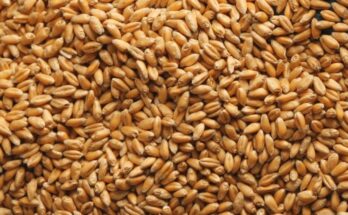India Pulses and Grains Association (IPGA), the nodal body for India’s pulses trade and industry, organised the IPGA Knowledge Series Webinar on Lentils. The webinar had a focused discussion on key aspects like production of forthcoming lentils crops, trade’s perspective of stock availability, expected imports as well as price outlook.
Addressing the webinar, Jitu Bheda, Chairman, India Pulses and Grains Association said, “A focused discussion on lentils was need of the hour for industry and trade especially considering the forthcoming season. We had a very insightful session covering key aspects around expected domestic production, trade’s perspective of stock availability, expected imports as well as price outlook including insights into government perspectives and NAFED’s plans regarding lentils as well as a detailed overview of lentils markets in Canada and Australia.”
Shedding light on the actions taken by the Government on lentils, Dr. SK Malhotra, Agriculture Commissioner, Government of India said, “Sowing has happened in 3.70 lakh hectare of land as on date out of the targeted 1.40 million hectare sowing for lentils. The production target has been set at 1.60 million tonnes. The speed of sowing has doubled this year thanks to excellent ground moisture availability and 80 percent or our 120 reservoirs are full to almost 80 percent of their capacity. With a view to achieve this, 1.30 lakh mini kits with high-yield and bio-fortified variety seeds have reached farmers and over 20,000 cluster demos are underway.”
“Pulses and oilseeds have been identified as priority sectors and NITI Aayog is also in the process of preparing a long-term policy framework on supply chain for pulses. The government’s focus is on productivity-led growth rather than area-led growth and on the smaller crops where volume was less but equally important crops, especially in pulses with a special focus on lentils,” Dr. Malhotra further added.
Highlighting the government’s lentils procurement, Sunil Kumar Singh, Addl. Managing Director, National Agricultural Cooperative Marketing Federation of India (NAFED) said, “We have sufficient funds, infrastructure and will buy every grain available at the farm-gate if the prices were to drop below the Rs. 51,000 per metric tonne MSP. This year advance arrangements have been made to ensure that no farmer would be deprived of the MSP declared by the government on account of procurement.”
Speaking on the domestic scenario for lentils, Rakesh Khemka, Managing Director, Uma Exports, said, “Lentils has become a highly traded commodity and India imported around 7.50 lakh tonnes red lentils last year and we expect around 1.05 million tonnes to be imported by end of March 2021. The prices are expected to remain in the Rs. 51,000 to Rs. 53,000 per metric tonne in the western India like Mumbai and Hazira. If the government increases the duty post-December, the prices could go up by Rs. 3,000 to Rs. 4,000 per metric tonne in the port areas. If the harvest goes fine and the production is at 1.60 million tonnes, the post-harvest prices in the port area could go down back to about Rs. 50,000 to Rs. 51,000 per metric tonne.”
Speaking on the Canadian scenario of lentils, Rav Kapoor, CEO & Director, ETG Commodities, Canada said, “This year Canada has 9.01 lakh tonnes of green lentils stock and around 2.03 million tonnes of red lentils. Kapoor expects Canada to export around one lakh tonnes of green and around 6 to 7 lakh tonnes of red lentils to India. Considering exports to other countries, Canada would be left with around 110,000 tonnes of red lentils by August 2021. However, if demand from Turkey, Sudan, Ethiopia, and UAE increases, then Canada may not be left with any carry-forward stock by August 2021.”
Speaking on the price front, Kapoor said, “Canadian farmers will not participate in the markets aggressively till after April 2021 when the situation of India’s lentil crop is clear. We do not expect any drop in Canadian lentil price till at least March 2021. We expect a spike of USD 100 per metric tonne in prices if demand from Turkey, Bangladesh and other markets increases. As of now the prices are in the USD 600 to USD 625 per metric tonne CNF range.”
Speaking about the Australian lentils scenario, Peter Wilson, Managing Director, Wilson International Trade, a Board Member of Pulse Australia and a veteran of the Australian Pulses Trade, said, “Over the last 30 years, the Australian farmers have developed the capacity to hold the product on their farms with excellent storage facilities. So, we do not see Australian farmers being in a hurry to sell their harvest as they have the capacity to hold it.”
“This year, Australia has a total availability of 861,000 tonnes of lentils and expects to export around 750,000 tonnes. Apart from India, we expect Turkey to be a big importer. As of now, even before the harvest, about 25 percent to 30 percent of the crop has already been traded and prices have been in the early USD 600 per metric tonne range,” Wilson further added.
Anurag Tulshan, IPGA East Zone Convenor and moderator of the webinar said, “With Canada having completed their lentils harvest, Australia about to start their harvest and India due to start of sowing, this was the best time to host this webinar as the Indian trade needed a holistic view of the overall situation.”





